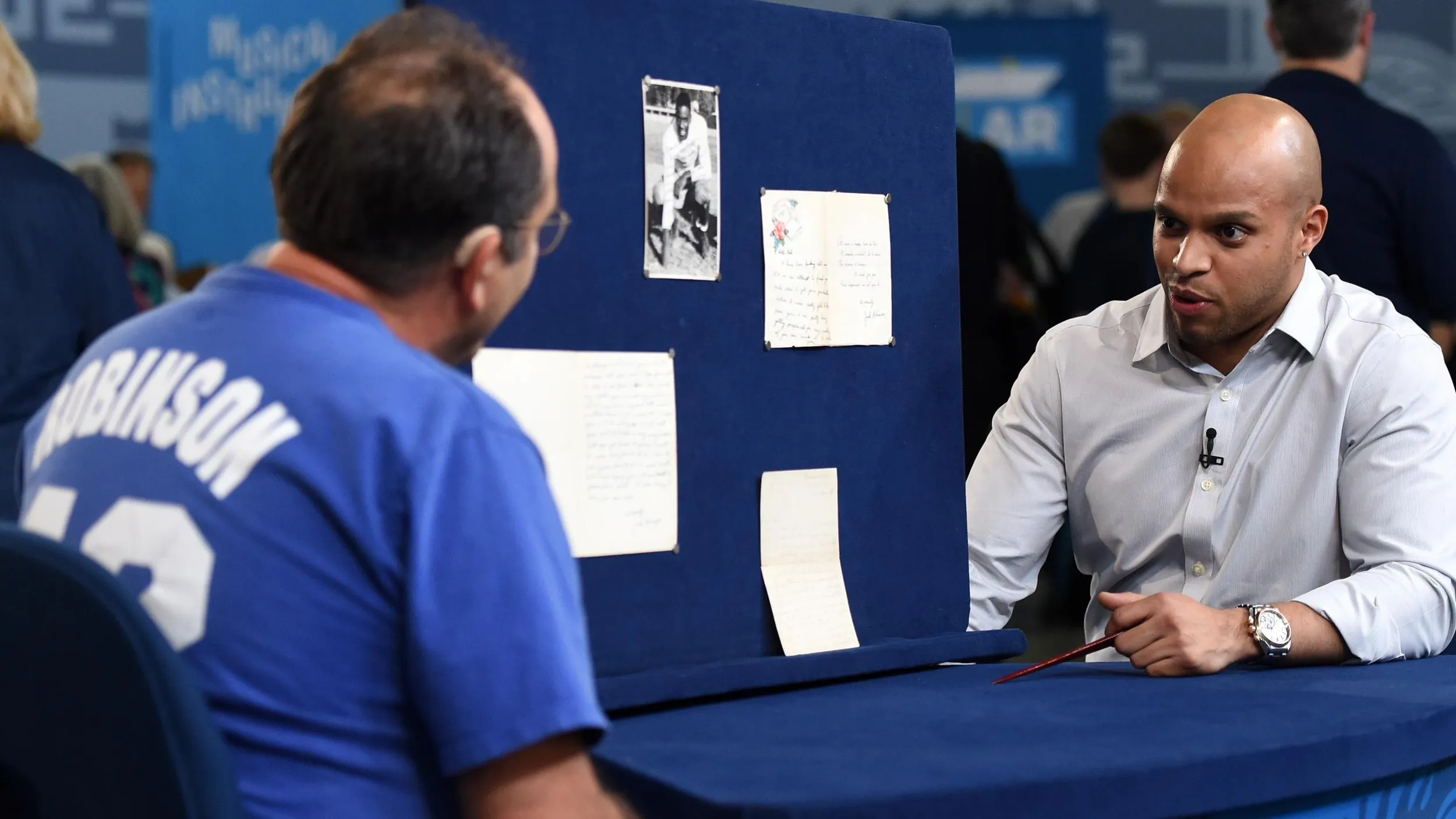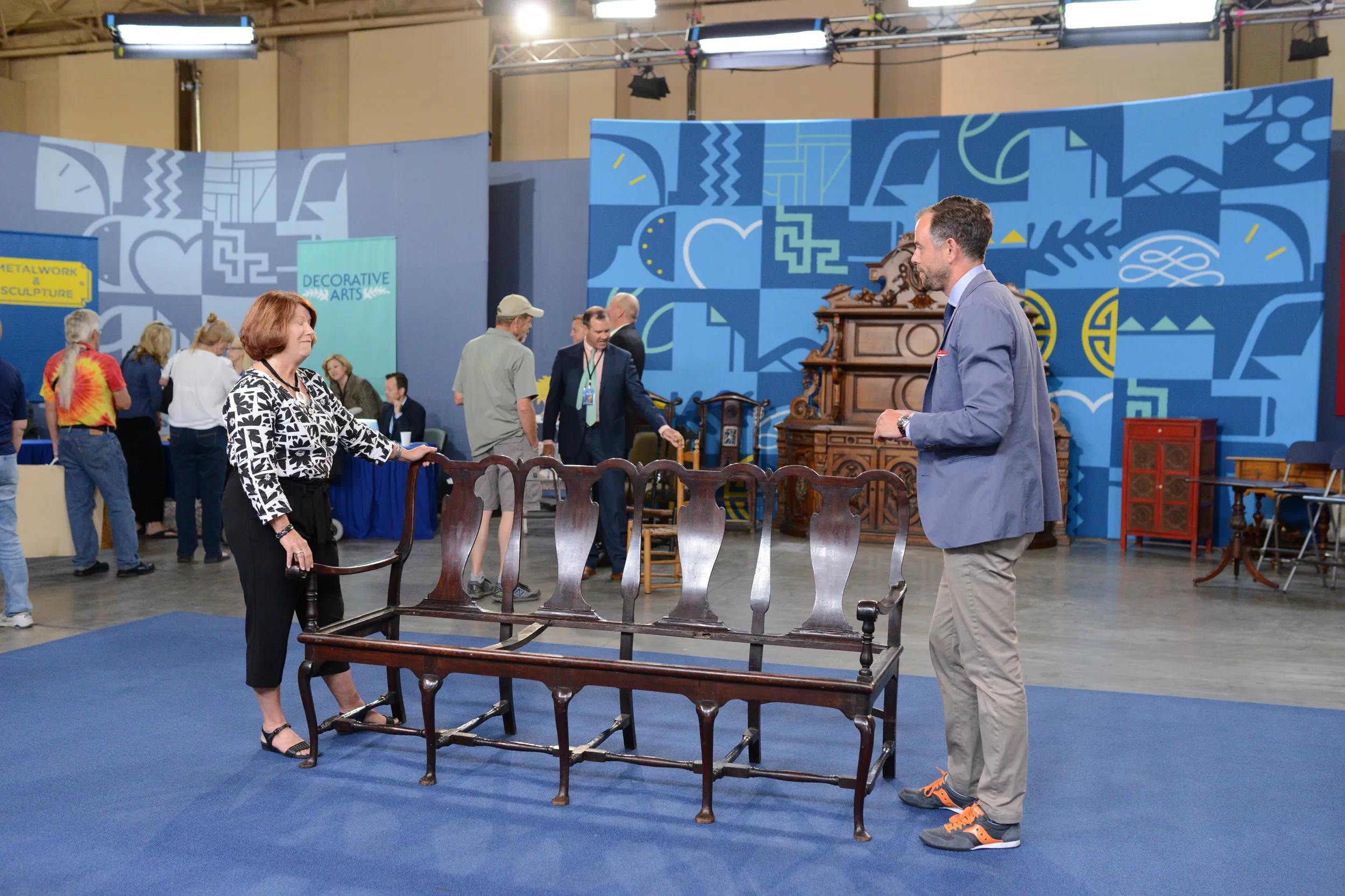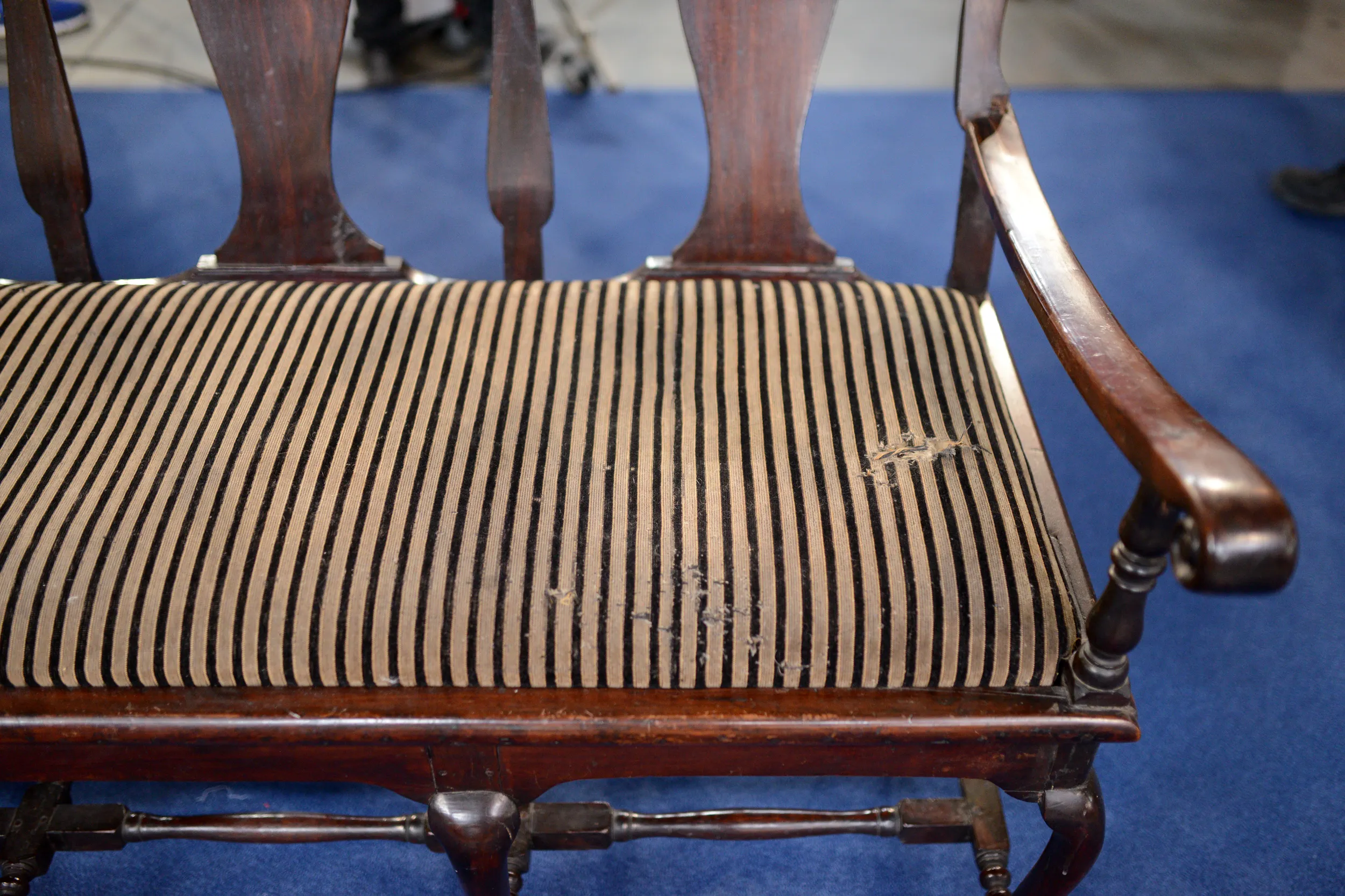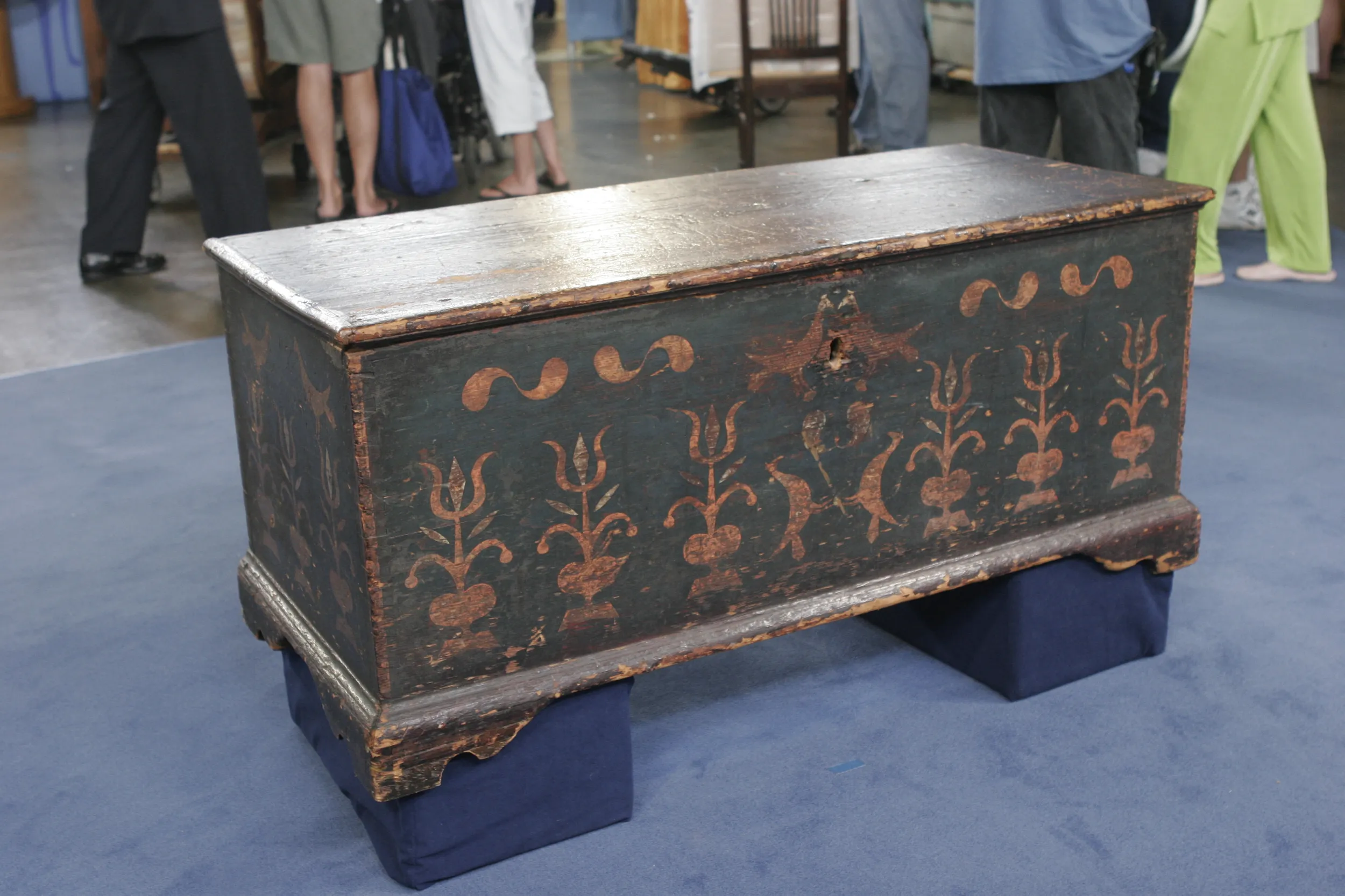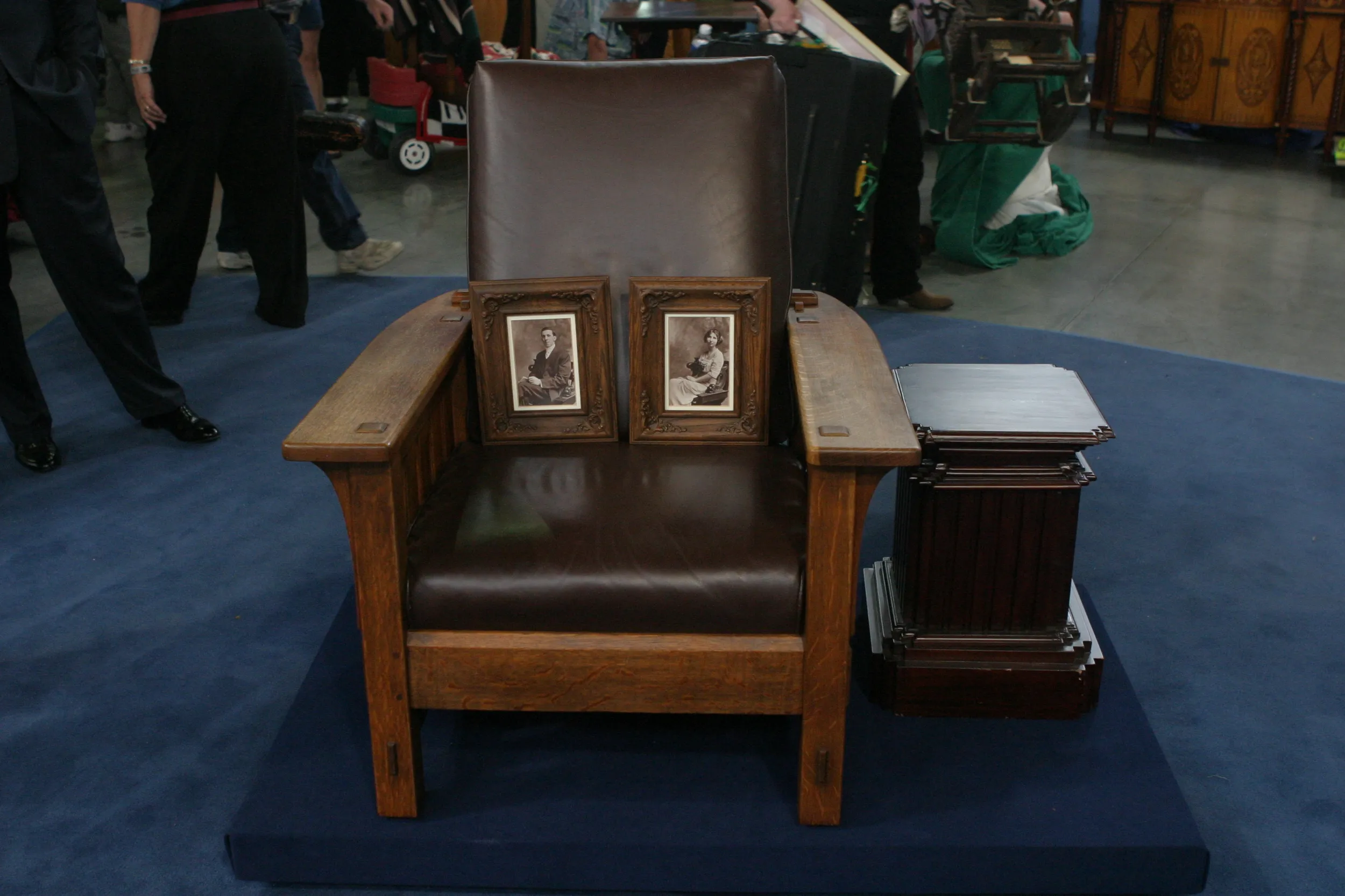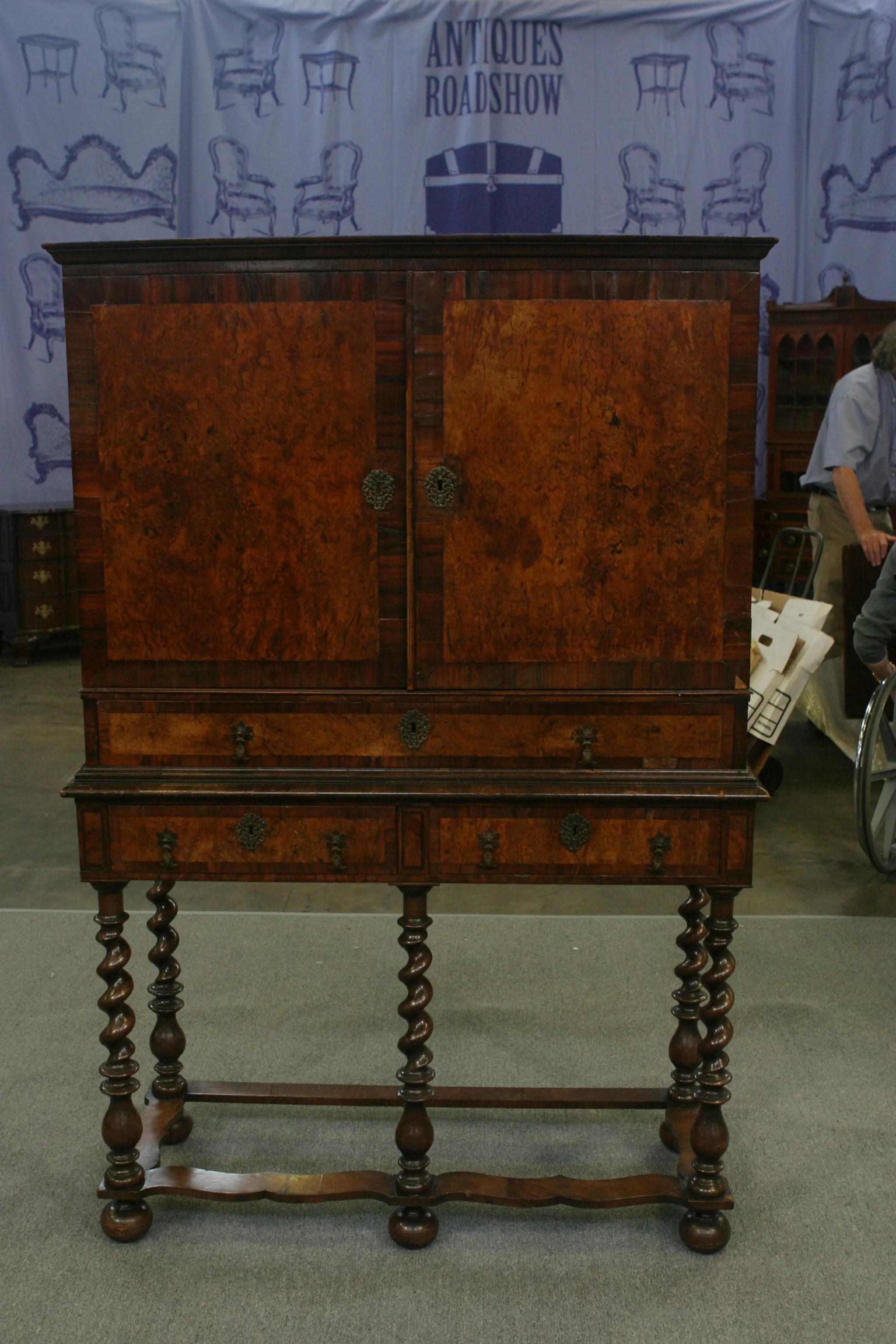GUEST: This is a settee that I bought in Ajo, Arizona. My husband wasn't with me, who doesn't like to stop, so I had an opportunity to stop. And I saw this across the room, and purchased it, and cats got to it and ripped the cushion, but that's okay. The man told me it's around 200 years old.
APPRAISER: Okay.
GUEST: So you can tell me if it is.
APPRAISER: Well, I'll do the best I can. So first, the cats getting to the seat, you're okay, because the seat is not original. Do you have any idea what it's made of, the wood?
GUEST: Uh, I thought walnut.
APPRAISER: Okay. So this is where it gets very interesting. It is actually a tropical hardwood.
GUEST: Oh, oh.
APPRAISER: So we're able to then identify where it came from…
GUEST: Good.
APPRAISER: …because of the wood that was used to make it. It's a tropical hardwood that is very similar to a rosewood or a sort of mahogany or a padauk. We believe this to be Dutch Colonial. So either made in one of the Dutch colonies in India, or in Indonesia in the 18th century. So it dates from around about 1750 to 1780. So I'm going to take the seat off here, and I'll see if I can do this.
GUEST: Do you want me to help?
APPRAISER: No, I’m-- I practiced.
GUEST: Okay.
APPRAISER: Let's see if I can do this.
GUEST: I know it's long.
APPRAISER: There we go.
GUEST: Oh, and dirty.
APPRAISER: Thank you so much. As you can see, it has these holes right here, and so that's where it was caned.
GUEST: Oh, it was caned.
APPRAISER: It was an original cane seating in here. And again, that's why we know it's colonial, because you'd never have upholstery. Because of the tropical climate, the upholstery would get ruined instantly. The carving is really wonderful. We look at the top of the crest rail, and you have this wonderful leaf tip here. And then this almost very Northern European Anglo-Dutch crest rail here. And then this urn form back splat as well. There are some condition issues to talk about.
GUEST: Okay.
APPRAISER: So the leg broke, and they repaired it.
GUEST: Oh.
APPRAISER: But what's kind of cool is that it's actually repaired with rosewood.
GUEST: Oh!
APPRAISER: Which is a very high quality and expensive wood. So you could possibly suggest it was also repaired in the colonies as well. So because there are some elements of this that are made of rosewood, there are certain export restrictions on where rosewood has come from, if it was ethically harvested, and having the object identification. And in today's market, that certainly affects the sale price. If it's for sale in the United States, to the best of my knowledge, then there are no issues. But when it comes to exporting the piece, let's say it was a European buyer or a collector who bought it-- they would have to go through certain steps to get specific permits to have it exported. It's unusual to see in any nation, whether it's English or American, a four chair-back settee, or a quadruple chair-back settee. How much did you pay for it?
GUEST: $800.
APPRAISER: Any idea of the value?
GUEST: I have none, no.
APPRAISER: Okay. With all of the condition issues, if I were to see this come up for auction in a good and well publicized auction, I'd expect to see an estimate of $6,000 to $9,000.
GUEST (laughing): Fantastic! That's great.

